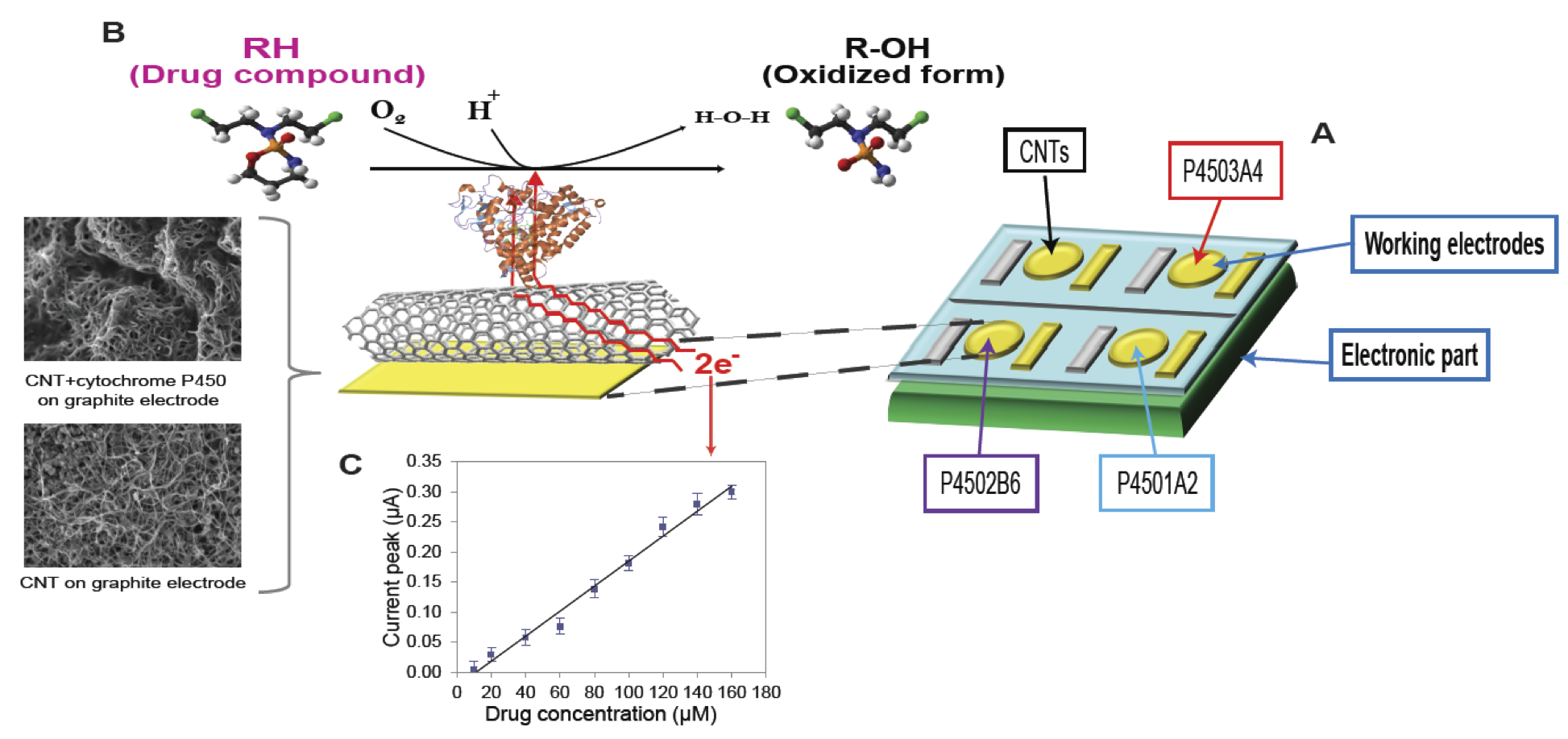Thesis title: Implantable Multi-panel Platform for Continuous Monitoring of Exogenous and Endogenous Metabolites for Applications in Personalized Medicine
Year: 2015
Multiplexed electrochemical detection of drugs in human serum by cytochrome P450-based sensor
Contact person:
Camilla Baj-Rossi, PhD Student, EPFL-IC-LSI
Sandro Carrara, Lecturer and Senior Scientist, EPFL-IC-LSI
Presentation:
Drug metabolism is hardly predictable since is dependent on many factors, such as patient’s genotype, environmental conditions and patient’s state, or the presence of other drugs within the same therapy. Moreover, several pharmacological treatments for major diseases, such as cancer or HIV, are often based on cocktails of different drugs. For these reasons, in order to individually optimize an ongoing drug therapy, it is required to know drug concentrations as due to the real and effective patient’s metabolism at the moment of the pharmacological cure. The rising demand for the development of personalized therapy recently stimulates significant research in studying feasible electrochemical biosensors based on cytochrome P450 (CYP) for detection of drugs and other chemical compounds. The detection mechanism is based on the quantification of the drug concentration present in the sample through the coupling of the binding reaction between the CYP and the drug to a current signal, which is detectable with an electrode (the detection mechanism for CYP-based biosensors is schematized in the figure). Carbon nanotubes are used for nano-structuring the electrodes in order to decrease the detection limit until the pharmacological ranges of the considered drug compounds, since it has been demonstrated that such nanostructures, thanks to their electrical and electrochemical properties, improve the CYP-biosensors selectivity and sensitivity.

P450-based chip platform with four electrodes (A). On the working electrode surface a cytochrome P450 transforms the redox form of a drug in its oxidized form by using one oxygen molecule and two electrons (B). In voltammetric measurements, the two electrons are supplied by the flowing current from the electrode. Through the measurement of this catalytic current is possible to indirectly obtain the drug concentration present in the sample solution (C).
Goal:
The goal of the present research is to develop a chip-platform based on different cytochrome P450 isoforms, immobilized onto multi-walled carbon-nanotubes, for the construction of an electrochemical sensor for detection of drugs and other chemicals. The first point is to study the electrochemistry of cytochrome P450 and how it changes changing the electrode surface properties with different nano-structuration. The second point is to try to measure different drug or chemical compounds. The third point is to carry out multiplexed detection of drugs with an array-based chip made by micro-electrodes. The last point will be the micro-fabrication of the chip with innovative micro-nano-patterning techniques.